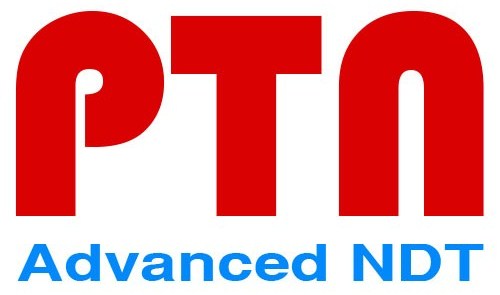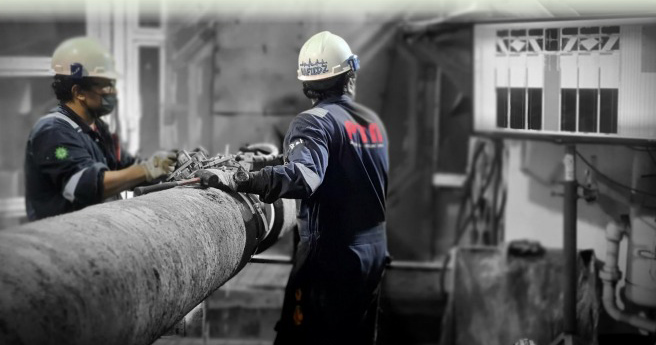PTN ADVANCED TECHNOLOGY
PT. PRIDE TRISULA NUSANTARA Established by professionals with extensive NDT experience for Onshore / Offshore Fabrication Industries.
1. What is automated ultrasonic testing (AUT)?
An NDT method by which an object is tested ultrasonically using probes operating under mechanical control and where ultrasonic data is collected automatically.
2. What is automated ultrasonic testing (AUT) system and semi-AUT system?
AUT system containing components providing mechanical control for ultrasonic probes and/or test objects and data acquisition of ultrasonic signals.
The difference between AUT system and semi-AUT system is the probe movement. Within semi-AUT system, the probe carrier is moved manually but the movement is encoded.
DNV-ST-F101 Appendix E specify that the system shall have a fully automatic recording system to indicate the location of imperfections and the integrity of acoustic coupling, but does not specify if the system shall have a fully automated or mechanical control for ultrasonic probes.
This means DNV-ST-F101 accept both automated ultrasonic testing (AUT) and semi-AUT systems.
3. Which techniques/concepts applicable for AUT and semi-AUT system?
In general, there are two concepts for AUT and semi-AUT system; zonal discrimination technique and volumetric technique.
AUT with zonal discrimination technique (ZDT) divided the weld into approximately equal vertical examination sections (zones) each being assessed by ultrasonic search units. Sound beam with specific incident angle is assigned to inspect each zone.
AUT with volumetric technique “floods” the interest area with sound beam. This can be achieved with phased array ultrasonic testing (PAUT), time of flight diffraction (TOFD), and/or total focusing method/full matrix capture (TFM/FMC).
Both zonal discrimination and volumetric technique has its own advantages and disadvantages, such as detectability, sizing accuracy, productivity, interpretation difficulties, etc.
DNV-ST-F101 recognize different concepts for AUT and semi-AUT system, which are; zonal discrimination, phased array techniques (for instance sectorial and/or linear scan groups) and ultrasonic imaging techniques (for instance TFM, FMC).
AUT with phased array technique use sectorial, linear, or combination sectorial and linear scan groups.
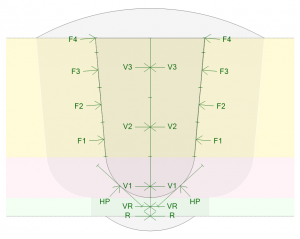
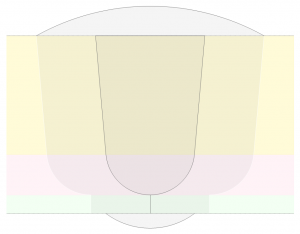
Figure 1 – Example of weld 12 mm thick, J-type-standard bevel with examination zone.
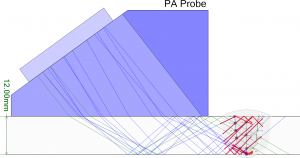
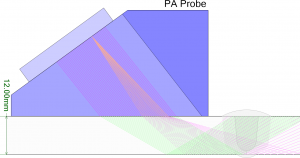
Figure 2 – AUT with zonal discrimination technique (left) and phased array technique (right).
For UT with mono-element, at least a pair of transducers is required for pitch-and-catch (PC) technique; while for pulse echo (PE), single probe is sufficient.
For PAUT, a single multi-elements transducer is sufficient to be used for both PC and PE technique. PAUT offers numerous advantages over UT with mono-element mainly due to focusing and steering capability.
PAUT uses multiple independent elements in a single probe. This makes it possible to capture and store all time-domain signals (A-scans) from every transmitter-receiver pair of elements in the array, a technique called Full Matrix Capture (FMC).
FMC allows this “full matrix” of raw A-scan signals to be processed in real time or saved for offline processing using different sets of reconstruction parameters for any given focal law or beam (aperture, angle, or focus depth), or by using so-called advanced focusing techniques.
One of these advanced algorithms is TFM, which uses FMC data to produce high-resolution two- and three-dimensional images for defect characterization and sizing.
TFM sums the elementary A-scan signals from all elements in the array to generate a frame of pixels where each individual pixel is computed using a dedicated focal law. These frames can be used for “live” interpretation or they can be stored for each position of the probe, similar to a “dynamic” merge view in regular phased array.
TOFD is the technique using the time-of-flight of diffracted signals from discontinuities in the test object.
Frequently, the NDT company combine different technique to optimize the result. Regardless the combinations and setups used, it is essential to qualify and validate the AUT system to demonstrate its performance (i.e. probability of detection (POD), probability of rejection (POR), sizing error, etc.).
DNV-ST-F101 Appendix E and DNV-RP-F118 are the most international standard/recommended practiced used as reference when performing qualification and validation of the AUT system.
